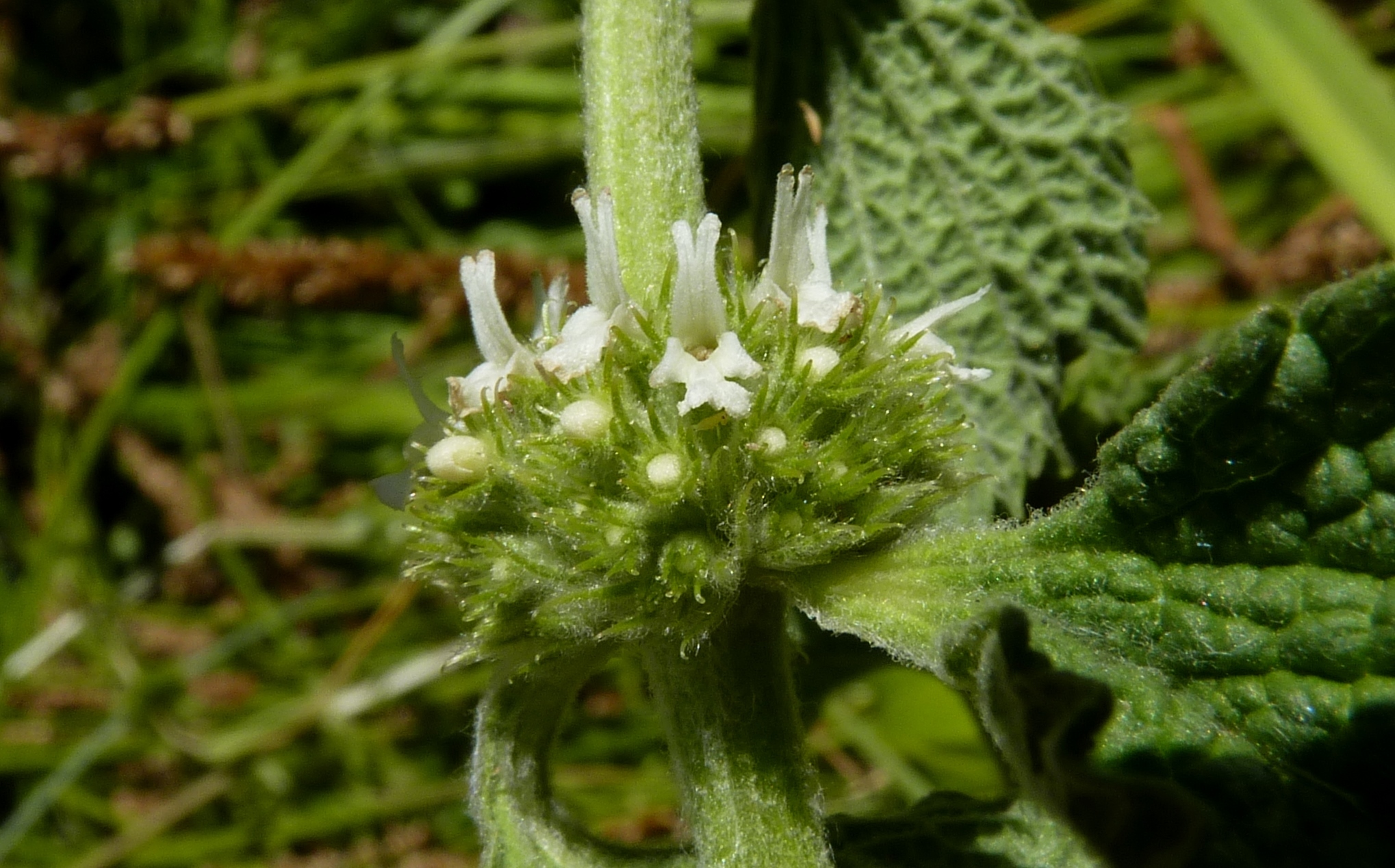
Ancient name, referring to the bitter aromatic smell and taste.
Aromatic, hairy, generally tufted, perennial herbs, woody at the base. Leaves opposite, dissected or with coarse, rounded teeth, the surface wrinkled. Flower clusters in dense axillary whorls. Flowers with spiny teeth and calyx 5-10-nerved. Corolla 2-lipped, the upper lip erect and generally notched, lower lip 3-lobed, white to purple. Stamens 4, in 2 pairs, enclosed.
Occasionally grown in herb gardens but to be discouraged because of the weed potential.
Seed or division.
M. vulgare is used as a medicinal tea and was once used as a constituent of confectionery and liqueurs.
White-hairy plants with wrinkled leaves; stamens enclosed.
About 30 species from Eurasia, the Mediterranean and Macaronesia.
Source: (2002). Lavandula. In: . Horticultural Flora of South-eastern Australia. Volume 4. Flowering plants. Dicotyledons. Part 3. The identification of garden and cultivated plants. University of New South Wales Press.
